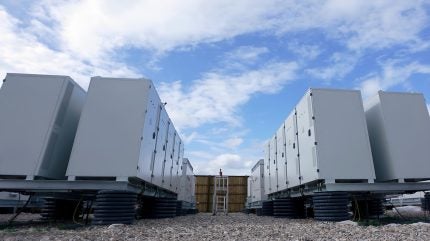
In a landmark development for India’s power sector, merchant battery energy storage systems (BESS) have achieved profitability for the first time in 2024, according to a recent report by energy think tank Ember.
This significant shift is attributed to the steep decline in battery costs and the ability to earn higher revenues from the increasingly volatile power markets.

Discover B2B Marketing That Performs
Combine business intelligence and editorial excellence to reach engaged professionals across 36 leading media platforms.
According to the report, battery costs have dropped by approximately 80% in the past decade, reaching Rs1.7m ($19,375.1) per megawatt-hour (MWh) in 2025, down from Rs7.9m/MWh in 2015.
Concurrently, potential revenues from market participation have surged fivefold to Rs2.4m/MWh in 2025 from Rs0.5m/MWh in 2015.
This has led to merchant BESS revenues exceeding costs in 2024, establishing these storage systems as a viable electricity grid asset.
The report further indicates that the day-ahead market (DAM) of power exchanges has seen peak prices hitting new highs while troughs have deepened. This increased price volatility has opened more opportunities for merchant batteries to generate value.

US Tariffs are shifting - will you react or anticipate?
Don’t let policy changes catch you off guard. Stay proactive with real-time data and expert analysis.
By GlobalDataNotably, electricity prices approached the current cap of Rs10 per kilowatt-hour (kWh) in one out of every six hours from 2022 to 2024.
Additionally, average midday power prices during the summer months dropped nearly 20% from 2022 to 2024, with prices occasionally falling to nearly zero.
Ember’s report models various scenarios for power price movements on the exchanges, predicting that by participating in DAM alone, merchant BESS investments could yield an internal rate of return of up to 17% from an investment made in 2025.
According to the report, revenue can be further increased by participating in the ancillary services market, which would also enhance returns.
The report concludes with the assertion that as India’s electricity system evolves to accommodate more variable renewable energy, the investment case for battery storage strengthens.
Furthermore, India has already achieved a significant milestone in its clean energy transition by attaining 50% of its installed electricity capacity from non-fossil fuel sources in 2025, surpassing its Paris Agreement 2030 target five years ahead of schedule.
In the first half of 2025, India witnessed the fastest growth in renewable power output since 2022 while coal-fired generation saw a decline of nearly 3%, as per a Reuters report. Despite these advances, fossil fuels still accounted for more than two-thirds of the total power generation increase in 2024.





